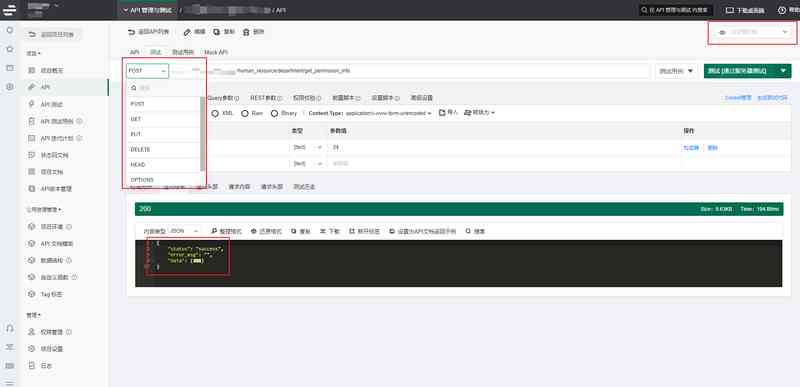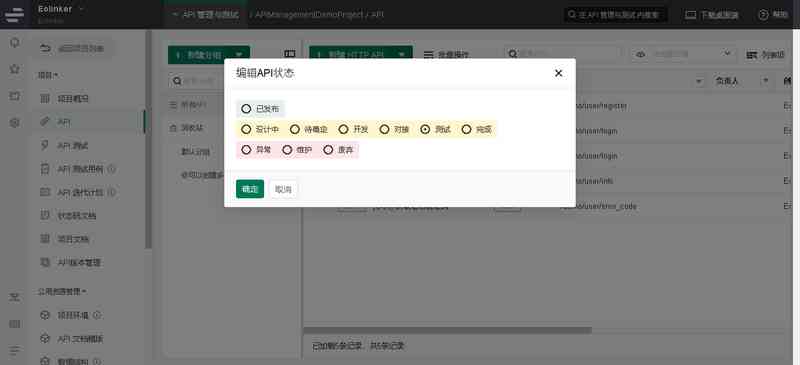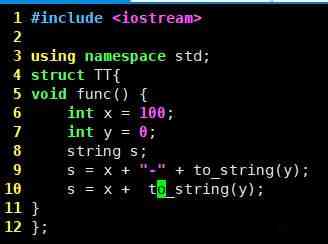当前位置:网站首页>Dynamic query processing method of stored procedure
Dynamic query processing method of stored procedure
2020-11-08 19:03:00 【Gently walk by】
When querying stored procedure dynamic matching problems , See the parameter dynamic matching processing of the stored procedure , I found myself making mistakes in this respect , So rearrange it and save it .
Mode one :
The common way to write : Put together strings , use EXEC To execute this pieced up string , Not recommended
create proc pr_getOrederInfo_1
(
@p_OrderNumber int ,
@p_CustomerId varchar(20) ,
@p_OrderDateBegin datetime ,
@p_OrderDateEnd datetime
)
as
begin
set nocount on;
declare @strSql nvarchar(max);
set @strSql= 'SELECT [id]
,[OrderNumber]
,[CustomerId]
,[OrderDate]
,[Remark]
FROM [dbo].[SaleOrder] where 1=1 ';
/*
The characteristic of this method is to query SQL Put it together into a string , Finally EXEC The way to execute this SQL character string
*/
if(@p_OrderNumber is not null)
set @strSql = @strSql + ' and OrderNumber = ' + @p_OrderNumber
if(@p_CustomerId is not null)
set @strSql = @strSql + ' and CustomerId = '+ ''''+ @p_CustomerId + ''''
if(@p_OrderDateBegin is not null)
set @strSql = @strSql + ' and OrderDate >= ' + '''' + cast(@p_OrderDateBegin as varchar(10)) + ''''
if(@p_OrderDateEnd is not null)
set @strSql = @strSql + ' and OrderDate <= ' + '''' + cast(@p_OrderDateEnd as varchar(10)) + ''''
print @strSql
exec(@strSql);
endThere is no problem with the execution method itself , It turned out to be no problem . But there are disadvantages
1、 It can't bypass the transfer operator and the injection problem .
2、 Because the parameters are different , It's going to lead to every piece of sql Different , As a result, it needs to be compiled every time , waste CPU resources , There will be problems with large quantities .
Mode two :
Use the OR The way to add to where In the condition , Very not recommended
create proc pr_getOrederInfo_2
(
@p_OrderNumber int ,
@p_CustomerId varchar(20) ,
@p_OrderDateBegin datetime ,
@p_OrderDateEnd datetime
)
as
begin
set nocount on;
declare @strSql nvarchar(max);
SELECT [id]
,[OrderNumber]
,[CustomerId]
,[OrderDate]
,[Remark]
FROM [dbo].[SaleOrder]
where 1=1
and (@p_OrderNumber is null or OrderNumber = @p_OrderNumber)
and (@p_CustomerId is null or CustomerId = @p_CustomerId)
/*
This is another way of writing a similar exotic flower , The following will focus on
and OrderNumber = ISNULL( @p_OrderNumber,OrderNumber)
and CustomerId = ISNULL( @p_CustomerId,CustomerId)
*/
and (@p_OrderDateBegin is null or OrderDate >= @p_OrderDateBegin)
and (@p_OrderDateEnd is null or OrderDate <= @p_OrderDateEnd)
endThere is no problem with the execution method itself , It turned out to be no problem . But there are disadvantages
1、 Suppress index .
2、 So are the parameters null It's a terrible time .
Mode three :
A parameterized SQL, recommend
create proc pr_getOrederInfo_3
(
@p_OrderNumber int ,
@p_CustomerId varchar(20) ,
@p_OrderDateBegin datetime ,
@p_OrderDateEnd datetime
)
as
begin
set nocount on;
DECLARE @Parm NVARCHAR(MAX) = N'',
@sqlcommand NVARCHAR(MAX) = N''
SET @sqlcommand = 'SELECT [id]
,[OrderNumber]
,[CustomerId]
,[OrderDate]
,[Remark]
FROM [dbo].[SaleOrder]
where 1=1 '
IF(@p_OrderNumber IS NOT NULL)
SET @sqlcommand = CONCAT(@sqlcommand,' AND OrderNumber= @p_OrderNumber')
IF(@p_CustomerId IS NOT NULL)
SET @sqlcommand = CONCAT(@sqlcommand,' AND CustomerId= @p_CustomerId')
IF(@p_OrderDateBegin IS NOT NULL)
SET @sqlcommand = CONCAT(@sqlcommand,' AND OrderDate>=@p_OrderDateBegin ')
IF(@p_OrderDateEnd IS NOT NULL)
SET @sqlcommand = CONCAT(@sqlcommand,' AND OrderDate<=@p_OrderDateEnd ')
SET @Parm= '@p_OrderNumber int,
@p_CustomerId varchar(20),
@p_OrderDateBegin datetime,
@p_OrderDateEnd datetime '
PRINT @sqlcommand
EXEC sp_executesql @sqlcommand,@Parm,
@p_OrderNumber = @p_OrderNumber,
@p_CustomerId = @p_CustomerId,
@p_OrderDateBegin = @p_OrderDateBegin,
@p_OrderDateEnd = @p_OrderDateEnd
endThere is no problem with the execution method itself , It turned out to be no problem .
First of all , It can avoid the first way of writing SQL Injection problem ( Including the handling of transfer characters ),
Because the parameters are passed in at run time SQL Of , Instead of being passed in at compile time , The parameters passed are executed according to what they are , The parameter itself does not participate in compilation
second , Ensure reuse of execution plan , Because you use placeholders to piece together SQL Of ,SQL The value of the parameter is different and leads to the final execution of SQL Different texts
Same as above , The parameter itself does not participate in compilation , If the query conditions are the same (SQL The sentence is the same ), And the parameters are different , It doesn't affect what you want to compile SQL Text information
Third , And the second situation is avoided (and (@p_CustomerId is null or CustomerId = @p_CustomerId)
perhaps and OrderNumber = ISNULL( @p_OrderNumber,OrderNumber))
This kind of writing , If the query condition is yes, there is , No is No , It won't be thrown to SQL Query engine results of one ambiguous two ,
It avoids the inhibition of index , It is a better way to deal with query conditions .
After reading these , We found that we need to adjust some stored procedures that may be large in the future ...
inductive :
1、 Create a temporary table .
2、 Write the data to the temporary table in mode 3 .
3、 Traverse the temporary table and splice it into JSON String returns
The actual measurement added
declare
@data1 NVARCHAR(20),
@count int,
@sqlcommand NVARCHAR(MAX) = N'',
@Parm NVARCHAR(MAX) = N''
begin
set @sqlcommand=' '
set @data1=' 1 or 1=1'
set @sqlcommand=' select @a=COUNT(1) from tb_user where 1=1 '
exec sp_executesql @sqlcommand,N'@a int output ',@count output
print ' Number ='+convert(varchar(10),@count)
set @sqlcommand=' '
set @sqlcommand=N' select id,u_no,u_name from tb_user where 1=1 '
IF(@data1 IS NOT NULL) SET @sqlcommand += N' AND u_name like ''%'+@data1+'%'''
print @sqlcommand
exec sp_executesql @sqlcommand
endresult

That's it. First .............
All of a sudden, what I'm using now is .
create PROCEDURE pro_demo
@action varchar(20)
AS
BEGIN
SET NOCOUNT ON;
-------------------------------------- Defining variables
declare
@method varchar(20),
@err varchar(20)
if @action='1'
begin
set @method='1'
goto res
end
if @action='2'
begin
set @method='2'
goto res
end
if @action='3'
begin
set @method='3'
goto res
end
set @err=' Method does not match '
-- It seems to be Allied Ah To find a donkey by riding a donkey .......
-- switch(){
-- case '1':
-- Method 1 ;
-- break;
-- case '2':
-- Method 2 ;
-- break;
-- case '3':
-- Method 3 ;
-- break;
-- default:
-- error ;
-- break;
-- }
res:
END
GO
版权声明
本文为[Gently walk by]所创,转载请带上原文链接,感谢
边栏推荐
- Not a programmer, code can't be too ugly! The official writing standard of Python: pep8 everyone should know
- Using fastai to develop and deploy image classifier application
- Iptables from introduction to mastery
- RSA asymmetric encryption algorithm
- SQL quick query
- 搭载固态硬盘的服务器究竟比机械硬盘快多少
- Django's simple user system (3)
- How much faster is a server equipped with a SSD than a mechanical hard disk
- 总结: 10月海外DeFi新项目,更多资管策略来了!
- 11 important operations of Python list
猜你喜欢

C + + opencv4.3 sift matching

The interface testing tool eolinker makes post request

Five phases of API life cycle

Exercise 5

解决go get下载包失败问题

IT industry salary has been far ahead! Ten years later, is the programmer still a high paying profession?

这几个C++的坑,一旦踩中了,加班是肯定避免不了了!

在Python中创建文字云或标签云

read文件一个字节实际会发生多大的磁盘IO?
![[开源] .Net 使用 ORM 访问 华为GaussDB数据库](/img/f8/50715c25a9d49b010cba2ff442c04e.jpg)
[开源] .Net 使用 ORM 访问 华为GaussDB数据库
随机推荐
为什么需要使用API管理平台
[open source]. Net uses ORM to access Huawei gaussdb database
Simple process of reading pictures by QT program developed by Python
不是程序员,代码也不能太丑!python官方书写规范:任何人都该了解的 pep8
使用Fastai开发和部署图像分类器应用
AI香水来了,你会买吗?
Mongodb add delete modify query operation
Using fastai to develop and deploy image classifier application
机械硬盘随机IO慢的超乎你的想象
给大家介绍下,这是我的流程图软件 —— draw.io
experiment
How does the system response time and throughput change with the increase of concurrency pressure during performance pressure testing
Introduction and application of swagger
Summary: in October, more investment management strategies have come to the new overseas defi project!
精通高并发与多线程,却不会用ThreadLocal?
Your random IO hard disk
Implementation of warehouse management system with ABP (net core) + easyUI + efcore
go语言参数传递到底是传值还是传引用?
第一部分——第1章概述
习题五